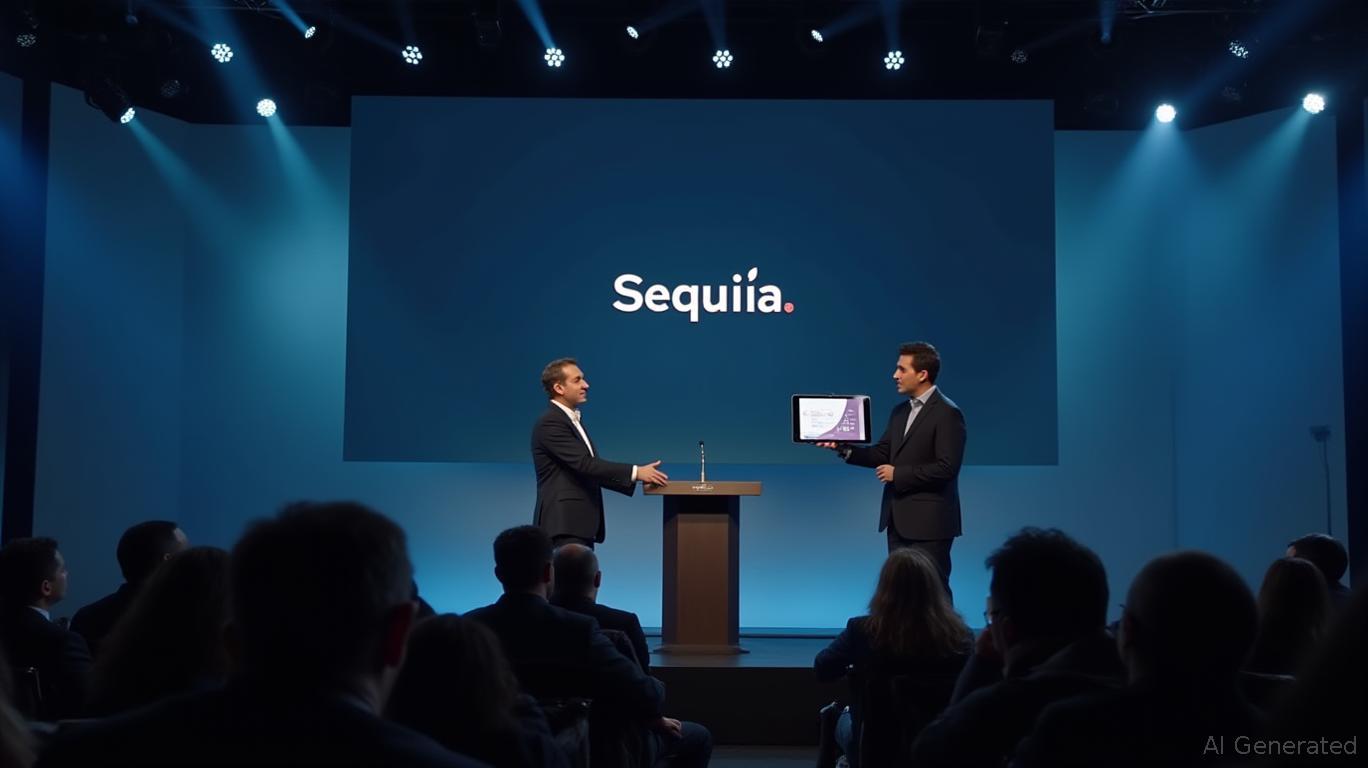Ethereum News Update: Will ZKsync’s Profit-Focused Token Help Stabilize $ZK’s Falling Price?
- ZKsync proposes restructuring $ZK token from governance to revenue-linked model, tying value to on-chain interoperability fees and enterprise licensing. - Dual revenue streams will fund buybacks, staking rewards, and ecosystem growth via community-governed mechanisms, decentralizing economic control. - Market reacted strongly: $ZK surged 15% daily post-announcement, boosted by Buterin's endorsement of Atlas upgrade and 15,000 TPS throughput. - Challenges persist: unclear fee structures, 54% annual price
ZKsync, the
The plan sets out two main sources of income: on-chain fees from interoperability across chains and off-chain licensing for enterprise solutions like compliance modules. These revenues would be overseen by a governance-driven system, distributing funds toward token repurchases, burning, staking incentives, and ecosystem growth. By shifting authority over aspects such as fee amounts and allocation ratios to the community,
The market has reacted favorably to the news. Following the announcement, $ZK jumped 15% in a single day, resulting in a
ZKsync’s strategy mirrors a wider movement in blockchain infrastructure, as layer-2 networks compete to deliver scalable, enterprise-level solutions. Its Prividium product, a private L2 designed for businesses, has already drawn attention from major players such as Citi and Deutsche Bank, who are now observers. At the same time, the
Despite the positive momentum, there are still obstacles. The proposal does not yet specify details about fee models, buyback timelines, or emission controls, with more information expected in future updates. Moreover, $ZK has dropped 54% over the last year, underlining the importance of ongoing adoption to support its valuation.
Both critics and advocates recognize the boldness of ZKsync’s approach. “The aim is to connect usage to value,” Gluchowski explained, stressing the significance of decentralization and sustainable economics. With the
Disclaimer: The content of this article solely reflects the author's opinion and does not represent the platform in any capacity. This article is not intended to serve as a reference for making investment decisions.
You may also like
Victim Compensation Does Not Excuse Criminal Acts, Judges Inform SBF
- Sam Bankman-Fried’s legal team faces uphill battle as appeals judges question claims of unfair trial and lack of fraud intent. - Judges dismiss defense arguments, noting SBF admitted not relying on legal advice during FTX fund transfers. - Court rejects post-trial repayment claims, emphasizing criminal liability persists despite 90% customer fund recovery. - Case sets precedent for crypto accountability, with appeals unlikely to succeed without procedural errors.

Sequoia's Change in Leadership: Will Advancements in AI Help Restore Broken Trust?
- Sequoia Capital's Roelof Botha steps down amid reputational crises, ceding leadership to Alfred Lin and Pat Grady during strategic recalibration. - The transition follows Islamophobic controversy, COO's exit, and a $200M FTX loss, prompting cultural and financial restructuring efforts. - New leaders prioritize trust restoration via a $950M AI fund targeting disruptive startups, signaling a return to U.S.-centric operations and ethical accountability. - The shift reflects industry-wide adaptation to geopo

Solana News Update: Mutuum Finance's DeFi Strategy: Balancing Stability Against Shiba Inu's Fluctuations
- Mutuum Finance (MUTM) raises $18.27M in presale with 80% completion, targeting $0.06 launch price for 400% potential gains. - Project combines Solana's utility-driven growth with SHIB's viral appeal via dual-lending model and automated risk management protocols. - CertiK audit (90/100) and $50K bug bounty address DeFi security risks, while buy-and-distribute mechanism boosts token value retention. - Whale investments and structured tokenomics (45.5% presale allocation) signal institutional confidence ahe

Bitcoin News Update: Retail Investors Panic While Institutions Accumulate as Bitcoin Challenges $106K Support Level
- Bitcoin fell below $100,000 on October 30, 2025, its first drop in six months amid heightened volatility. - ETF outflows ($488M) and institutional buying (397 BTC at $114,771) highlight retail caution vs. institutional confidence. - Analysts warn of 65%-70% drawdown risks over two years, citing weak investor understanding and panic selling cycles. - Regulatory shifts (e.g., Wyoming stablecoin plans) offer partial support but fail to offset year-to-date price swings ($67k-$124k). - Market uncertainty pers
